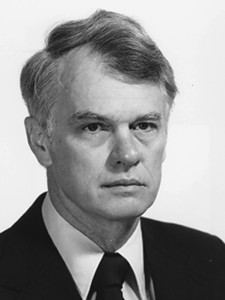-
(b.) - ?1929
Bio/Description
An American computer engineer at Texas Instruments, he is known for his work on the first digital computer with Integrated Circuits (IC) and the first TTL computer. Born in Ruston, Louisiana, he studied Electrical Engineering at Louisiana Tech University in Ruston graduating in 1950. He then worked for a telephone company in New Orleans and was in the U.S. army for two years in a tank unit that tested infrared night vision devices in the Mojave Desert during the Korean war. In 1953 he joined Hughes Aircraft in the Los Angeles, California area, where he worked on automated air defense. This was his entry into the field of digital computers (he took some courses at the University of California, Los Angeles (UCLA), and in 1957 he moved to Tennessee, where he worked as an engineer in the digital instrumentation in a wind tunnel at Arnold Engineering Development Center in Tullahoma USAF with the UNIVAC 1102 computer designed especially for them. In 1959 he joined Texas Instruments, Inc. (TI) in Dallas, Texas, to work in digital technology and signal processors for seismic data (programmed with plug-in boards). While there, he built the first digital computer using Integrated Circuits (IC) built by Jack Kilby for the U.S. Air Force in 1961 and similar digital central processing units for measuring instruments on rockets (for James Van all in 1963 and 1964) and the military. The use of ICs still encountered resistance, in particular by circuit designers. The breakthrough in TI came with the proof of the benefits of the currently developed TTL in a signal processor for seismic data (TI-870) in the mid-1960s and the construction of the successor of a transistor computer for seismic data processing (TI-AC) with ICs. The project started in 1965 on the TI advanced scientific computer (ASC). It was also built with ECL, since TTL was not fast enough. The main problem was the cooling of the processor. The ASC wanted to make TI the leading CDC 7600 by Seymour Cray competition and used ideas of the CDC 6600 from Cray. The first ASC 1970 at Royal Dutch Shell in the Netherlands was delivered and produced until 1985. The machine had vector computers properties and could use it partially with the ILLIAC 4-parallel computer record. At the end of the 1970s he pushed the development for the TMS 320 signal processor, which came out in 1983. In 1984 after 25 years, he left TI to teach at University of Texas at Austin. In retirement, he deals with computer history (colossus, North Bombsights, torpedo data computer for torpedo Steering in U.S. submarines during the second world war). In 1984 he received the IEEE Emanuel R. Piore Award; and in 1986, he received the Eckert-Mauchly Award, "For major contributions to computer architecture and for pioneering the application of integrated circuits for computer purposes and for serving as architect of the Texas Instruments scientific computer and for playing a leading role in many other computing developments in that company." He was also noted for major contributions for work performed during his years at Texas Instruments. He is a member of the National Academy of Engineering, the IEEE Computer Society, the Association for Computing Machinery (ACM), and the Charles Babbage Institute.
-
Date of Birth:
1929 -
Noted For:
Designer and builder of the first digital computer with Integrated Circuits (IC) and the first TTL computer -
Category of Achievement:
-
More Info:


